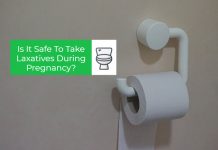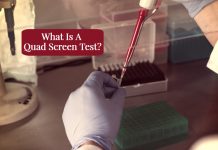The third stage of labor involves the removal of the placenta from your body. Some women get their placenta and baby’s umbilical cord preserved for the presence of stem cells. The latest trend is to eat placenta in the form of capsules. The practice is placenta encapsulation.
It is not a theory and rather being done by international celebrities like Kourtney Kardashian, Holly Madison, Mayim Bialik and Alicia Silverstone made news by eating their encapsulate placenta. The benefits of eating placenta include an increase in breast milk production and prevention of postpartum depression.
What does it mean to have your placenta encapsulation?
Placentophagy or eating of the placenta is a not so popular but prevalent practice since ages. Animals and both men and women eat placenta for its benefits. The encapsulation of the placenta is its conversion into capsules.
Even if you are feeling gross placenta encapsulation is still better. Better, not in terms of its nutritional value but the ease of consumption. People eat the placenta after cooking, or as raw as it comes out of your vagina. They may even blend it in the form of a drink. The manufacture of placenta pills includes processing, sterilizing and then dehydrating it to form a powder.
The powder is then converted to a capsule just like any other supplement tablet.

What are the benefits of eating your placenta?
People who are pro-natural birth, explain the reason for placenta eating to be the revival of lost nutrients from mother’s body. The hormones, blood, and other components that made placenta should not go in the bin.
Why do people eat placenta?
A mother needs nutrients that she lost during delivery and what better than eating placenta which is a storehouse of it. Research is still ongoing about the benefits of placenta encapsulation and whether at all it works.
The feedback from volunteers and such famous celebrities is positive. After eating placenta most of them could overcome baby blues and nursing problems. The milk production increased and energy levels surged. Whether it was psychological or because of eating the placenta is under speculation. For now, it is more of a trend to adopt the practice.
Controversies surround the subject and it is not possible to provide a confirmed answer about the safety of placentophagy.
Pros and Cons of Placentophagy
Benefits of eating placenta are a quick recovery, countering postpartum depression and breastfeeding troubles. Other than that the increase in production of oxytocin helps a mother bond with her newborn.
Following are the benefits of eating your placenta:
1) Supplements iron deficiency
The placenta has a lot of blood vessels filled with iron-rich blood. Consuming it can replenish iron lost during labor and other stages of pregnancy.
2) Elevates Corticotropin-releasing hormone
This hormone released from the hypothalamus of the brain reduces stress. The direct result of it is countering anxiety and baby blues.
3) Enhances oxytocin levels
The milk ejecting hormone is also known as the love hormone. Breastfeeding problems can be because of insufficient oxytocin. The milk production initiation depends mainly on oxytocin. Later prolactin continues the production of milk.
4) Uterus healing
The same hormones and iron also help in the recovery of the uterus. Uterus needs to recover from the massive expansion and stress during labor.
5) Can control postnatal spotting and bleeding
Your baby’s placenta has a lot of iron and other nutrients essential for platelets to clot blood. Eating them back can be equivalent to adding more blood clotting cells directly to your body. Postnatal bleeding can because of many reasons such as low hormones. Placenta pimps up the female reproductive hormone. All of its held in quicker healing and tuning to pre pregnancy life like before.
6) Nutrients pep up your energy levels and further assist recovery
Iron, folates, lipids and metals going in body help in boosting your energy. When you will have enough energy body will be able to cope. Post traumatic stress disorder risks are high in women who had heavy bleeding during delivery. Taking back their placenta will replenish the lost blood partly.
What are the placenta encapsulation risks?
There are many risks associated with consuming placenta such as improper storage. Bacteria or virus infection of the placenta while handling or from your body can lead to food poisoning.
If your baby secrets meconium or first poop over placenta, it is not safe to consume.
Other risks include any abnormality in the placental cells that can transfer to you upon consumption.
The placenta can pass blood-borne diseases. Moreover currently no government ruling regulates the manufacture of placenta pills.
Whether or not the preparation or placenta encapsulation is done following safety procedures has no proof.
Risks associated with eating placenta:
1) Dizziness or disgust
Even after being mentally prepared, your brain can trigger such a response. You may have nausea and vomiting. A sense of disgust might even make you feel irritable or self loath.
2) Infections or blood-borne disease
Meconium contaminants can be more harmful than the benefits you receive. Bacteria that feed on blood can transmit diseases even after processing.
3) Improper storage making placenta toxic
The placenta is a rich source of iron and treat for sangivorous (blood feeding) bacteria. Viruses and other microorganisms can produce toxins in blood. Advanced techniques are expensive and slight err in storage makes placenta a waste product.
4) Intake of any drugs given during labor
Some pain killer meds or sedative drugs can move into the placenta. These drugs can have side effects that are not yet known. More studies and research will sort such problems of placenta encapsulation.
How to eat placenta?
To acquire your placenta capsules, you need to consult an expert. The Association of Placenta Preparation Arts carries out the procedure of placental encapsulation following the safety guidelines.
Some hospitals follow their policy and might allow you to take your pregnancy waste. You need to make arrangements for it beforehand.
Once you decide to eat the placenta you need to make sure that it is free of pathogens. If there were any abnormalities then placentophagy won’t be safe.
How much does it cost to have your placenta encapsulation?
Placenta pills cost around 400$ for getting the entire procedure done by specialists. You can eat it like meat or make DIY placenta pills.
The encapsulated placenta doesn’t require any special refrigeration. However, if you decide to store the placenta in its actual form then you need to keep it refrigerated.
Until reaching out to the manufacturer placenta must be kept in cold condition. Not storing it at the right temperature can spoil or rot it and make it toxic.
Is it OK to eat your placenta?
That depends on you. One thing is for sure that the placenta is no magical preparation that is a cure for endless disorders. Your body needs nutrients which can be from any source that is edible.
Postpartum depression and low milk production have many remedies. Without any ground to deny the benefit of placenta encapsulation, experts cannot boycott the idea.
Whether you want to eat your baby’s placenta, get cryopreservation or discard it, is your choice.
Should I eat my placenta? Is human placentophagy myth or therapeutic?
Such questions are yet to get scientifically grounded definite answers. Ethical issues and safety concerns still border the practice.
It could be a placebo or may be proven actually beneficial. One thing is for sure that not eating placenta doesn’t harm you or deprive you of an advantage.
All the nutrients that people who support placenta encapsulation enumerate are present in healthy tasty food.









